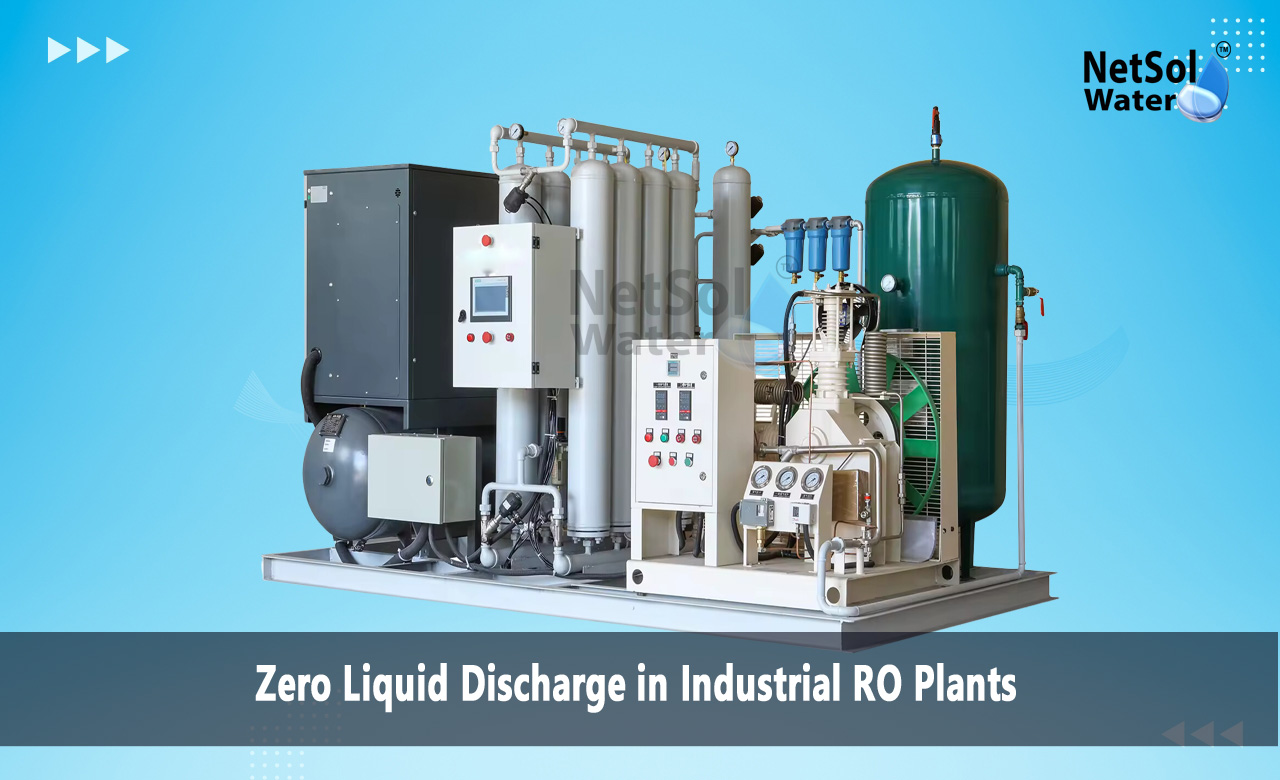How Zero Liquid Discharge Achieve in Industrial RO Plants?
Industries worldwide face water scarcity as a growing challenge. Environmental regulations continue to tighten while water resources grow scarcer. Industrial facilities need better solutions to manage their wastewater. Zero Liquid Discharge plants in Industrial RO plants address these challenges effectively. ZLD systems transform industrial wastewater management by recovering almost all water for reuse. This eliminates liquid waste discharge into the environment. Industries that implement ZLD technology in their RO plants meet environmental standards. This creates a sustainable future for water-intensive operations.
This section discusses how ZLD systems work. You will learn about their benefits and discover the best practices for implementation in industrial settings.
Zero Liquid Discharge in Industrial RO Plants
ZLD advances water treatment and management in industrial settings. It builds upon conventional RO technology to create a closed-loop process. This process maximizes water recovery and eliminates wastewater discharge. Let us examine how ZLD systems integrate with RO plants and what makes them effective.
System Components and Configuration
Multiple treatment stages work together at the core of a ZLD system. Pretreatment units start the process by removing suspended solids and other contaminants. The RO system then separates clean water from concentrated brine. Evaporation units process the concentrated stream to recover more water. Crystallizers complete the process by transforming the remaining concentrate into solid waste.
Integration with Existing RO Plants
Engineers must plan carefully to install ZLD plants into existing RO plants. This process starts with evaluating current plant capacity. Teams then upgrade pumping systems and add necessary equipment. The design phase must consider space requirements energy consumption and material compatibility. This ensures successful integration with existing operations.
Monitoring and Control Systems
ZLD installations use advanced monitoring equipment to maintain peak performance. Sensors continuously track flow rates, pressure differentials and conductivity levels. Automated controls make real-time adjustments based on these measurements. This ensures consistent water quality and maximum recovery rates throughout the system.
Benefits and Applications of Zero Liquid Discharge in Industrial RO Plants
ZLD systems create multiple advantages beyond environmental compliance. These systems generate value through resource recovery operational improvements and long-term sustainability. Let us explore how different industries benefit from ZLD applications.
Water Conservation and Recovery: ZLD systems achieve water recovery rates above 95%. Industries operate with minimal freshwater intake at this efficiency level. The recovered water meets quality standards for various industrial processes. This creates an effective water management cycle that supports sustainable operations.
Waste Minimization and Resource Recovery: ZLD systems produce solid waste through crystallization. This waste often contains valuable minerals and compounds. Industries can extract and sell these materials to create new revenue streams. Solid waste occupies less space than liquid waste. This makes disposal simpler and reduces associated costs.
Industry-Specific Applications
Each industry adapts ZLD systems to address unique challenges. Power plants manage cooling tower blow downs and boiler wastewater. Chemical manufacturers process their wastewater and recover valuable chemicals. Food and beverage producers maintain quality standards while protecting the environment. Each application demonstrates the versatility of ZLD technology.
Implementation Strategies and Best Practices
Proper planning, implementation and maintenance drive success with ZLD systems. A structured approach maximizes benefits while managing operational challenges. Let us examine strategies that ensure successful ZLD implementation.
Design Considerations: Engineers must account for wastewater composition and flow rate variations. The design must include materials that resist corrosion and scaling. System layouts should accommodate future expansion and maintenance access. These elements ensure the system performs reliably over time.
Operational Excellence: Maintenance schedules keep ZLD systems running at peak efficiency. Operators monitor performance indicators and address deviations quickly. Staff training enhances understanding of system operations and troubleshooting. This focus on operations maintains effectiveness and prevents unplanned downtime.
Cost Management: Industries control ZLD implementation costs through strategic planning. Energy optimization reduces daily operating expenses. Preventive maintenance extends equipment life and prevents repairs. The recovery of valuable materials creates additional revenue opportunities. This comprehensive approach maximizes return on investment.
Conclusion:
Zero Liquid Discharge in Industrial RO Plants revolutionizes wastewater management. It creates sustainable closed-loop systems that protect resources. This technology empowers industries to safeguard the environment, conserve water and enhance operations. More industries will adopt ZLD solutions as water becomes scarcer. Our water treatment experts stand ready to show you how Zero Liquid Discharge will benefit your facility. We provide comprehensive consultations to design and implement ZLD solutions that match your needs.
Contact Netsol Water at:
Phone: +91-965-060-8473, Email: enquiry@netsolwater.com



